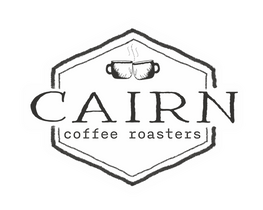Tariffs, Droughts and Your Morning Cup
Oct 05, 2025
☕ Coffee Prices Are Climbing—Here’s Why
For the past few months, I’ve felt like a sloth trying to get ahead in a foot race when it comes to evaluating the tariff situation and making decisions. One day it looks like coffee will become a true luxury product, the next it looks like the decision has been reversed. What hasn’t changed is the uncertainty—and the impact it’s having on the coffee industry.
Right now, green coffee (not yet roasted) prices are at an all-time high. That’s not just due to weather or supply—it’s largely driven by U.S. tariffs on global coffee trade.
What’s Behind the Price Hike?
- In September 2024, the global benchmark for Arabica coffee (the C-market price) was ~$1.88/lb.
- By March 2025, droughts in Brazil and reduced output in Vietnam pushed it to ~$3.84/lb. These two countries are the top two global producers.
- Then came the tariffs: a 50% duty on Brazilian coffee imports raised the effective price to ~$6.00/lb by September 2025.
- Retail prices followed suit. A 2 lb container of Folgers rose from ~$12.99 to ~$19.72.
→ Source: Wall Street Journal
Why Tariffs Matter
The U.S. is still the world’s largest coffee consumption market. Tariff decisions affect every link in the supply chain—from producers to importers to roasters. Brazil’s coffee exports to the U.S. dropped by 20% in July and 46% in August. Meanwhile, import duties on coffee and equipment have increased by 10–50%, leaving many companies scrambling to adapt.
→ Source: The Pourover
Brazil: A Trusted Blend Partner
Brazil coffees anchor some of our most popular blends. They’re smooth, low in acidity, and consistently reliable. But in 2025, they became more expensive than several higher-quality lots from Central and South America. This means it is no longer cost effective to use as a blending component.
What We’re Doing About It
We’re adapting. Over the next few weeks, we’ll be cupping and evaluating coffees from other origins to replace Brazil in our blends. Our goal is to maintain the same balance and drinkability you’ve come to expect—without compromising on transparency or sustainability.
We’re also keeping a close eye on how these changes affect producers. While prices are rising, many farmers aren’t seeing the benefit. That’s why we’re committed to sourcing responsibly—so you know where your coffee comes from and why it matters.
Will We Be Raising Prices?
It’s likely. If the green coffee price and tariff situation don’t change, we will need to adjust prices to keep pace with rising costs. For now, we’re monitoring developments closely including a pending Supreme Court case that could impact how or if these tariffs are applied.
Want to Follow the Journey?
We’ll share updates as we identify new blend components. If you’re curious about the process, we’d love to keep you informed—remember to subscribe to our newsletter. Also, please feel free to share this email and invite a few friends.
